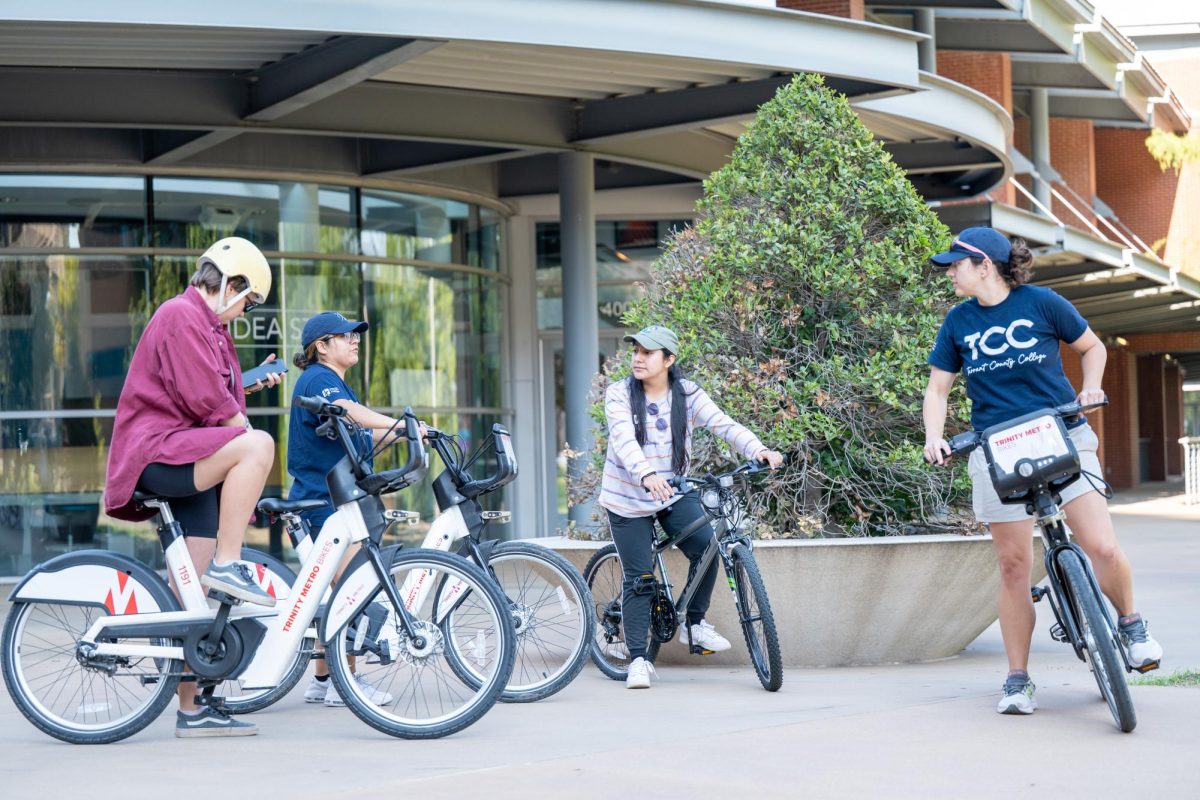Experts discuss technology’s present, future applications
Gamers and students alike gathered at “The River Speaks: Digital Humanities I” event at TR Campus last Thursday.
Digital humanities is basically the blend between humanities and Science, Technology, Engineer and Math fields and how they can work together to create new fields of scholarly inquiry, TR English associate professor Johansen Quijano said.
Quijano is one of the main organizers behind Digital Humanities I and II as well as the Games for Change event, which is where the Digital Humanities events stem from.
Gabi Kirilloff
TCU English assistant professor
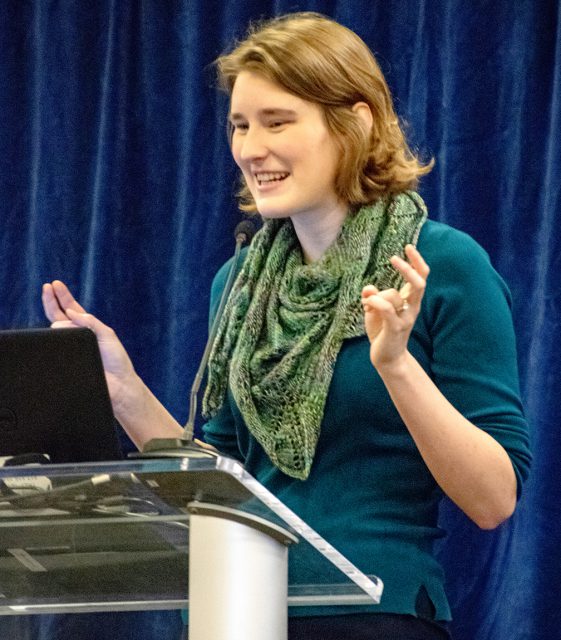
Kirilloff educated attendees on distant reading, which uses computers to map “broad trends and patterns in literature,” she said.
Contrary to close reading, which involves careful examination of text through the lens of literary devices, distant reading pays specific attention to the exact words used and their frequency.
“The frequency of words function like a fingerprint,” she said.
She illustrated this through the book The Cuckoo’s Calling by Robert Galbraith which, through the use of distant reading, was actually revealed to be the work of Harry Potter author J.K. Rowling using a pen name.
Although distant reading is useful in large-scale analysis, Kirilloff said the process has its limitations and critics.
“Distant reading is like looking at a city’s power grid from an airplane,” Kirilloff said. “Patterns are visible, but complexity and nuance is lost.”
Kirilloff addressed two case studies of distant reading. The first covered the relationship between gender and action in 19th century fiction.
A computer model guessed gender using only verbs from a collection of more than 3,000 19th century novels — all in an effort to determine if male and female characters behave differently.
Kirilloff found the computer guessed the gender correctly 82 percent of the time, supporting the study’s conclusion of a strong correlation between gender and action in 19th century fiction.
The second case study tracked where the author or narrator spoke directly to the reader — a technique known as “reader address.” Using a selection of 2,000 novels written between 1789-1923, 60,000 instances of “reader address” were found. In addition, 1,864 of the 2,000 novels studied contained at least one instance of “reader address.”
“The average number of sentences per novel containing ‘reader address’ is 49, which means that, on average, each novel addresses you, the reader, 49 times,” Kirilloff said.
The applications of such research, according to Kirilloff, can be virtually limitless when it comes to wide-ranging data accumulation.
Several in attendance felt Kirilloff presented this complex material in a digestible and enjoyable way.
“It was very informative,” TR student Connie Kim said. “Digital humanities is on the cutting edge of the field, and I’m really interested in that.”
TR student Riley Pickering agreed.
“It was very interesting,” Pickering said. “I feel like I learned a lot about gender stereotypes in older literature.”
Kirilloff suggested anyone looking to explore further should consult Google Ngram, a practical application that automatically processes thousands of Google books to track uses of certain words over time.
Jason Helms
TCU English assistant professor
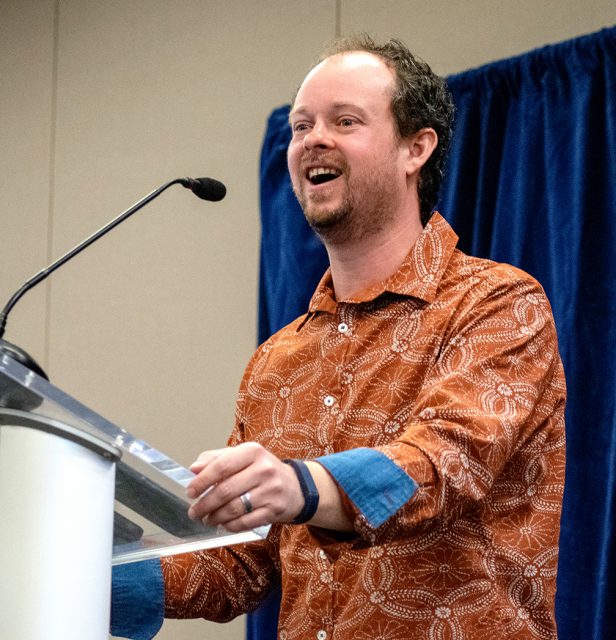
Helms shared his knowledge about video games and the ways society impacts their progression. Video games do not work unless someone plays them, he said.
Helms gave examples of games he and his students made throughout his career. He listed several public events and tournaments and said reaching a large audience helped support funding those events and developing games.
Helms also discussed his passion for incorporating diversity into games he creates. Gaming makes it possible to create characters that range beyond just one race and gender, he said.
“People wouldn’t necessarily want to play a character just like themselves,” Helms said. “They just didn’t want to be the same character every time.”
Helms talked about the ways video games affect the public. Gaming has had an impact on politics and social media, he said.
“This is the exciting world of development where lots of stuff goes wrong,” he said.
Helms said he hoped to invite the community to participate in making and critiquing games, saying he wanted to share his passion for gaming beyond his students.
Kirilloff explained how Helms broadened her perspective on gaming.
“I’m teaching a class the teacher designed right now,” she said. “His work has inspired me to integrate video games into the class.”
Kassiopia Jackson
e-sports competitor
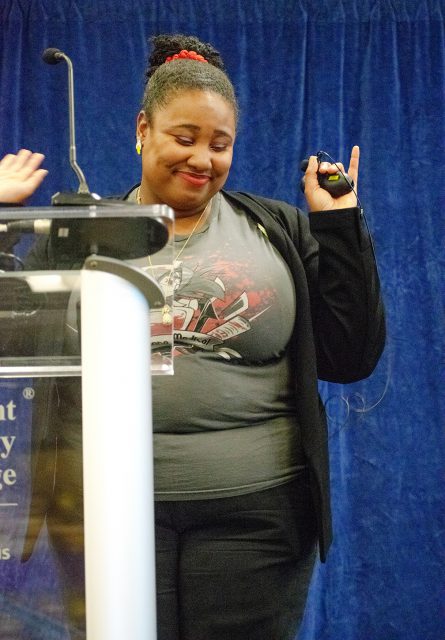
Jackson tackled both video games and mental health and discussed her experience as a YouTube, live-stream gamer and her beginnings in the fighting-game community.
Jackson said she joined this community in 2016 after learning of professional fighting gamer Alex Valle of Southern California. She has now gone on to attend competitions like the Evo Champion Series and Tekken Tournaments with international competitors.
Jackson also discussed her life in 2018 when she experienced severe depression, saying her online community gave her the strength to get out of bed every morning and rekindled her passion for gaming.
As a latchkey kid growing up, Jackson began playing video games with her brother. But as she started third grade, she was bullied for bringing her “Mortal Kombat” strategy guide to class and realized she was different from other girls her age.
Later, when she stumbled upon the fighting-game community, she was shocked to find people just like her.
“I spent my whole life thinking that I was the only person that played games like this,” Jackson said.
In 2016, Jackson officially joined the FGC, turning her solitary and often isolating hobby into a tightly-knit community. Two years passed, and Jackson noticed a change in her mood. She stopped playing completely, losing her passion for games and falling into depression. But through her friends online, Jackson overcame her depression and returned to her love of video games, forming a bond with the FGC that was even stronger than before.
“They would send me DMs every day, asking if I was all right,” Jackson said. “That’s one of the things I love about the FGC. When you accept your own faults and failures, they support you.”
The event hosted a number of speakers, all centered about digital humanities. Some students attended for their love of technology and gaming, and others attended for information.
TR student Shanane Sanchez said she does not play video games but still enjoyed the presentation and liked hearing about other people’s interests.
NE student Samantha Moore also attended and said she left with a lot of information. Moore is a “Fortnite” player who actively plays online with others.
“[I liked] how she found a community in gaming, and that’s very universal,” Moore said. “Everyone who plays games has a community.”
She and a fellow “Fortnite” player, Tyler Towney, first met in a NE Campus acting class four years ago where they hit it off and have been playing together ever since. Both Towney and Moore live stream, uploading their gameplay directly to their viewers.
“On a personal level, I liked her story of going through depression because it’s similar to what I’m going through as well, just losing your passion for the things you love,” Towney said. “But she found solace through her community.”
Audrey Haferkamp
NW English assistant professor
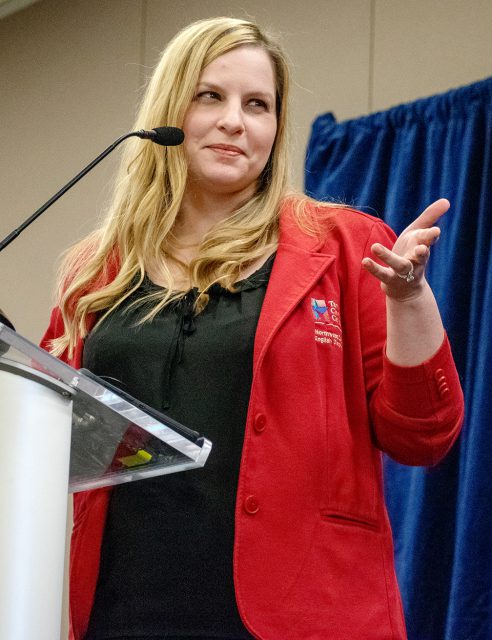
Girls in short skirts with lollipops in their mouths was one of the topics discussed by Haferkamp during her speech.
“We don’t want to go back towards just representation of damsels in distress,” Haferkamp said. “We want a lot of different kinds of representation. More representation can also mean more people feeling welcome in that gaming community.”
Haferkamp talked about different waves of feminism.
“There’s a lot of this sort of clash with what it should even be about within feminism itself, so how you do an analysis,” Haferkamp said. “Of course, there are going to be different views in that.”
Some video games had what Haferkamp called the damsel-in-distress issue. The whole game revolves around saving the female, but the female is not a playable character.
Haferkamp listed some arguments she has heard for why so many games are designed with this damsel-in-distress storyline.
“Maybe it’s so common because it’s an easy plot device and it says something good about men,” Haferkamp said. “It’s not necessarily designed to degrade women.”
Another argument is that in the early years males were primary players, she said.
“When you’re talking about the damsel in distress and these kind of tropes, it doesn’t necessarily come from an intentional oppressive, you know, space,” Haferkamp said.
The history of lollipop symbolism, which is girls with lollipops in their mouth and what that symbolizes, has had an impact on gaming, she said
“There’s some strange associations about this tension between sexualizing young females and then also infantilizing older females,” Haferkamp said.
Haferkamp used two main games during the speech for reference, “Lollipop Chainsaw” and “Bayonetta”.
She showed the audience a commercial for “Lollipop Chainsaw,” who then got to answer survey questions online about their opinions based on what they saw.
On one hand, there is this strong independent lead female character who is not super dependent on a man. But on the other hand, she is dressed in a cheerleader outfit, and there is even a part in the game where you can get prizes for looking up a girl’s skirt, Haferkamp said.
There are many different elements in a game that need to be assessed to answer such a question, Haferkamp said.
She showed a YouTube video game review of “Bayonetta” by YouTuber Anita Sarkeesian.
Bayonetta, the main character, is wearing skin-tight clothes, and in one of her main attack moves, her clothes disappear so her hair can be used as a weapon, Sarkeesian said.
The main character is an overly-sexualized, animated representation, Sarkeesian said.
But for others who have played “Bayonetta,” that might not be their viewpoint. Haferkamp once enjoyed playing this exact game.
The way female characters are clothed in games is not always the primary selling point, TR student Ramsey Otero said.
Although there are some games that portray women in a very stereotypical role, or in a very sexualized role, there is still such a vast variety of video games that have a great representation of women, Heaven Torres said.
“For example ‘Overwatch’ does a good job of showing diversity and differences in sexuality and race,” Torres said.
Haferkamp grew up playing video games as a child in the ‘80s.
“I kind of moved away from it for a while because I didn’t see a lot of, you know, female representation,” Haferkamp said.
Fate brought her back to the video game world after she was in a car accident.
“I was sort of homebound for a while, and that’s pretty isolating,” Haferkamp said. “So, I needed to find a community, something to do. That’s when I kind of rejoined it. Building communities [and] building connections is a huge thing.”
–This article was written by the following contributors: reporters John Mair, Maddie Christian, Hannah Daniel and campus editor Jade Myers.































